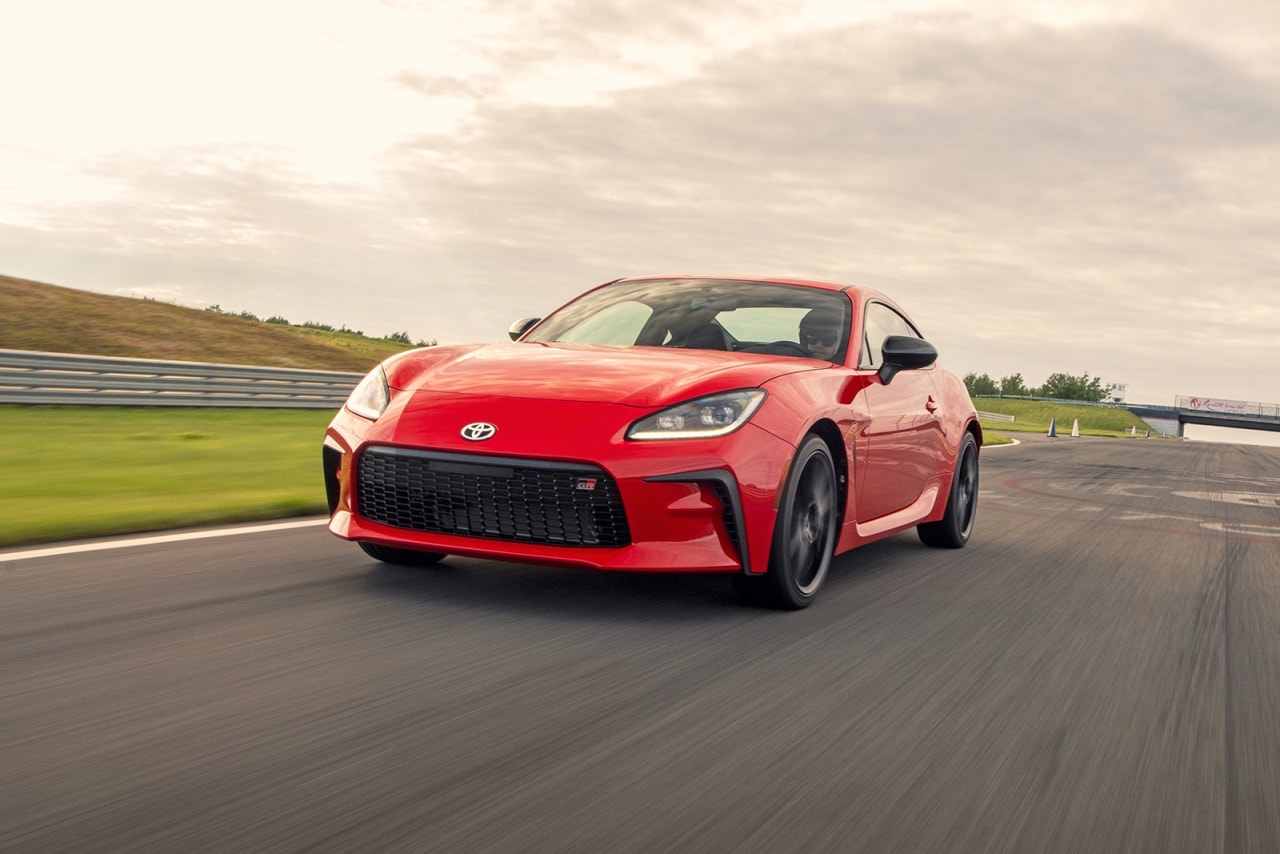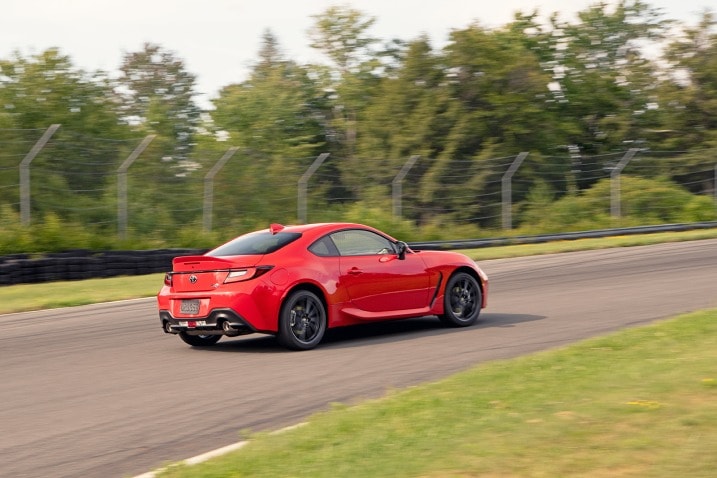- The automatic transmission makes the GR86 nearly a second slower to 60 mph.
- This car is crying out for an optional dual-clutch automatic.
- In other news, the GR86's handling is subtly different from that of the Subaru BRZ.
TRACK TESTED: 2022 Toyota GR86 Automatic Is a Lot Slower Than the Manual
Despite being nearly identical to the Subaru BRZ, the 2022 Toyota GR86 offers a slightly different look and feel for the sports car enthusiast. We figured that we'd wholeheartedly prefer the six-speed manual that comes standard in both cars, but we wanted to give the optional six-speed automatic some time at our test track to evaluate the differences.
In short, we figured right. Here's how the automatic GR86 performed.
Automatic, if you must
Such are the speed and sophistication of modern automatic transmissions — whether conventional automatics or dual-clutch automatics — that most vehicles so equipped will outrun the manual transmission version of the same car. There are a number of reasons for this, but some of the big ones are:
- Quicker shifts are possible with today's automatics.
- Most automatics have more gears and can run shorter gearing to keep the engine in its sweet spot and improve acceleration.
- Automatics can more easily incorporate complex launch control systems to maximize the jump off the line.
This is the point where we note that the automatic GR86 has none of these benefits over the manual version. The transmission in question is a modified version of the unit you'd get in a Lexus IS 250. It's not the quickest-shifting auto 'box in the world, and with only six speeds, it's unlikely to have a significant gearing advantage over the six-speed manual.
So how did it run? Let's turn it over to our test notes.
"You need to power-brake this automatic to help get it off the line with some snap. Make sure the transmission is in its Sport setting and that the Track drive mode is selected. Track mode brings up a bar-style digital tachometer that, unfortunately for this purpose, doesn't really start showing rpm until after 3,000. With the narrow tires, we found the best launch rpm to be somewhere around 2,500, which meant we essentially had to launch the GR86 on sound alone since the tachometer wasn't registering that low. Less than ideal."
"If you don't nail the launch rpm just right, you'll either spin the narrow tires or the GR86 will nearly bog and just not get away quickly. This is much tougher to launch than the six-speed manual version — go figure. Launch control would do wonders. But then the next blow to the automatic comes in the form of inexplicably tall gearing. Every shift drops the GR86 right out of its powerband and the engine just doesn't rev with the same snap that it does with the manual transmission. Oh, and the shifts are a bit leisurely, too. Not slow, but this is clearly Lexus-level sportiness instead of real sports-car stuff. I'll take the manual, please."
The numbers bear these complaints out. The run to 60 mph took 6.9 seconds (6.5 seconds with 1 foot of rollout), while the quarter mile took 15.3 seconds at 93.2 mph. Compared to a similarly equipped Subaru BRZ that we tested with a manual transmission, the automatic-equipped car was 0.8 second slower to 60, 0.4 second slower to the quarter mile and 6.7 mph slower at the quarter-mile mark. That's a whole lot of slow, especially by the standards of today's automatics.
Automatic or not, it's still great
As you'd expect from two nearly identical cars, the GR86 stopped from 60 mph in a similar distance to the Subaru BRZ. Actually, it was a bit better, stopping in 103.8 feet to the BRZ's 106.4 feet. Like the BRZ, the GR86 exhibited excellent stability with some coarse ABS intervention but outstanding pedal feel. The GR86 also proved adept at late braking around our handling test loop. From our test notes: "You can dive in pretty deep with these brakes. And the GR86's light weight makes it possible to trail them into a corner without the car getting too loose."
But, as with the BRZ, we have our reservations about the brakes' prolonged use on a track: "I really hope they offer a proper brake kit next year. I'd upgrade the pads for track use, as it only took a few laps to notice some fade."
The GR86's handling is very similar to the BRZ's and proved just as enjoyable, even with the automatic transmission. The steering is just as wonderfully accurate as the BRZ's, but just a touch less darty, making it initially a bit easier to be smooth in the Toyota. On the skidpad, the GR86 was 5% less grippy, putting up 0.95 g versus the 1.0 g pulled by the BRZ. But we'll put the difference down to the somewhat cold (for Southern California) weather we'd been having when we tested the Toyota. This made the track surface a bit chilly and likely held the GR86 back.
In any case, the thrills and skills of the GR86 are eye-opening and far better than you'll experience in most sports cars costing twice as much. One thing to watch out for with the GR86 compared with the BRZ is its stiffer rear springs. We found the GR86 to be more easily upset over midcorner bumps than the BRZ as a result. While some drivers might find the stiffer ride and looser handling of the GR86 more exciting, we prefer the more buttoned-down BRZ here.
Edmunds says
Like the nearly identical Subaru BRZ, the Toyota GR86 offers fun for all skill levels at a price for nearly all budgets. Even when equipped with the optional six-speed automatic transmission, there's fun to be had down a good road or around a racetrack. We still prefer the standard six-speed manual, particularly in light of the automatic's major speed deficit. But if the automatic transmission opens up the sports car realm to new drivers, then we're absolutely on board.








 by
by